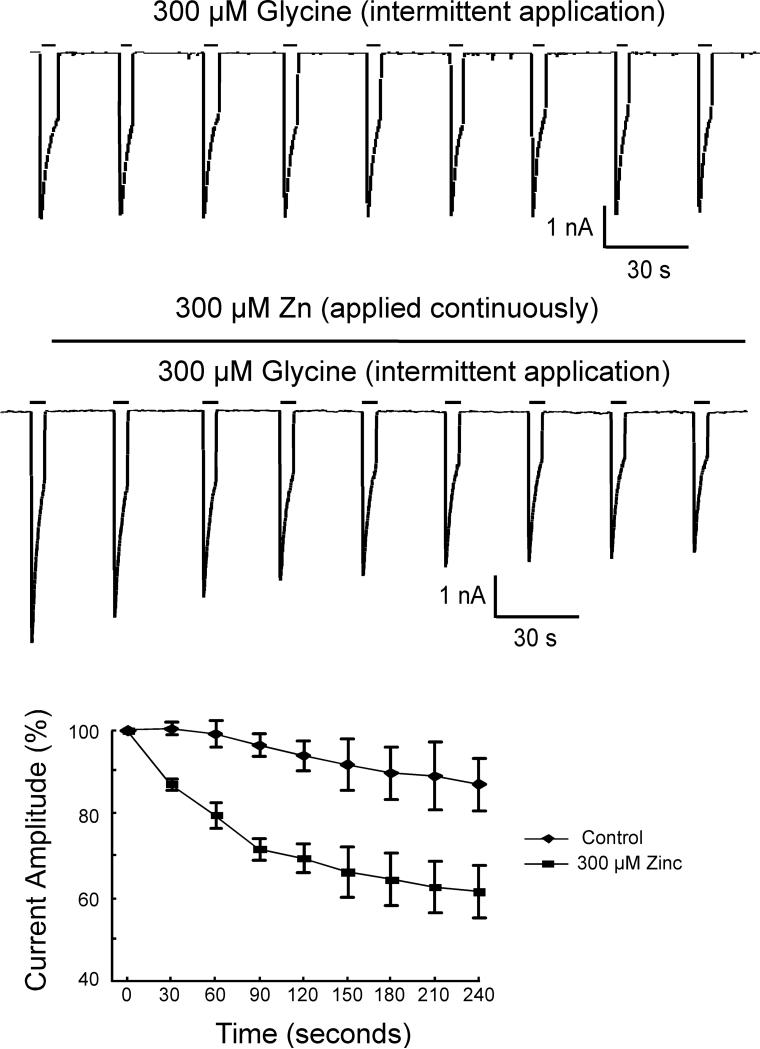Figure 2.
In contrast to the lack of an effect of zinc when co-applied with high concentrations of glycine, pre-application of zinc (300 μM) produces a slowly developing inhibition. Top) Pulse application of 300 μM glycine evokes reproducible inward currents. Middle) Continuous application of 300 μM zinc during pulse application of 300 μM glycine slowly inhibits the glycine-evoked currents. Bottom) Summary graph of the effects of zinc over time on glycine-evoked currents in both hippocampal and olfactory bulb neurons.

